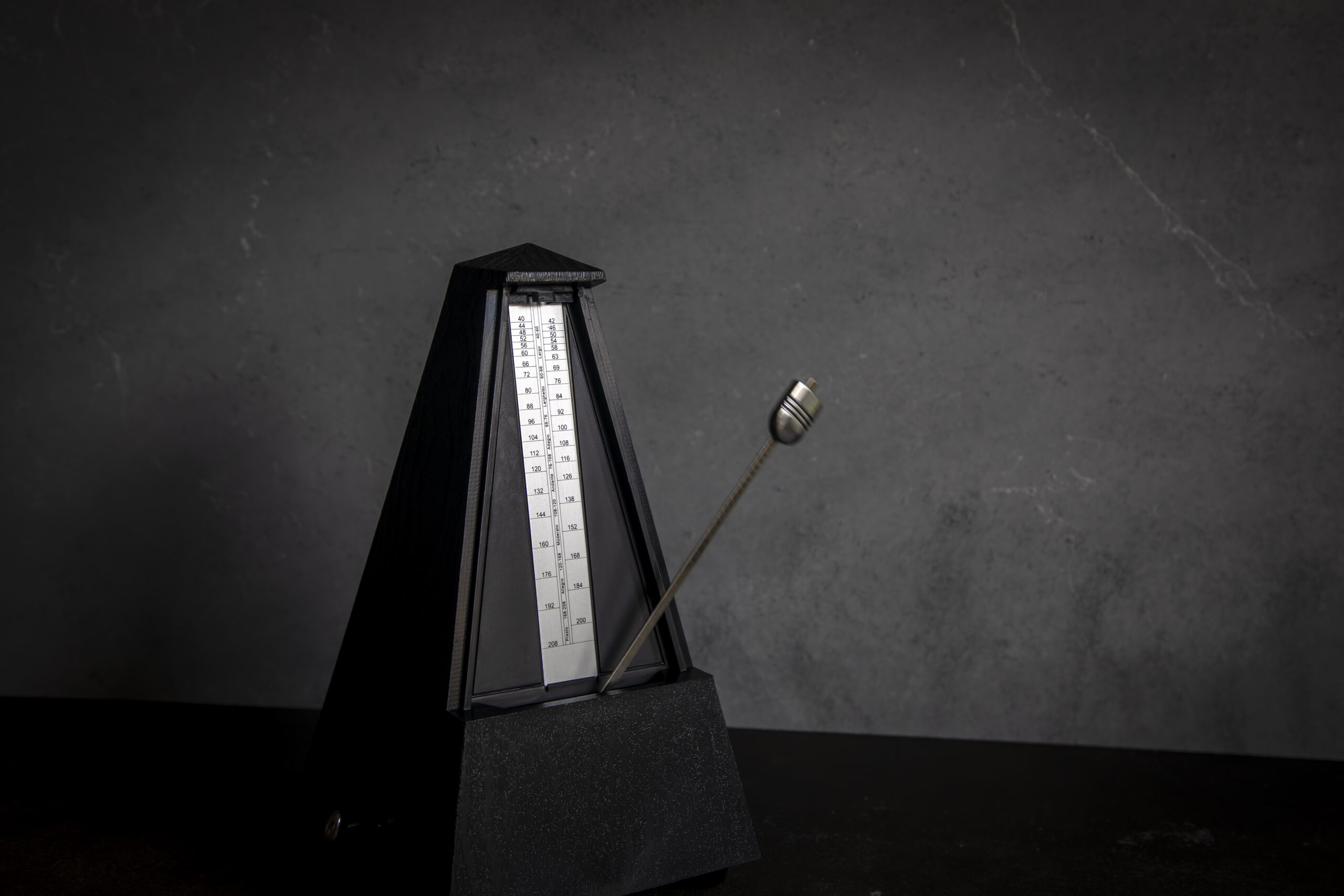What is time, really? If we follow the Greek philosopher Heraclitus, it is something in flux. Yet if we follow Parmenides, it is unmoving. This paradox, between time as a measurable flow and time as a subjective moment, isn’t just academic. It’s musical.
When we bring music online, especially in the form of Telematic Music Performance (TMP), these tensions resurface with new complexity. Our computers speak in precise ticks, driven by electronic oscillator circuits and CPU clocks. Our bodies, by contrast, are governed organically through breath, gesture, speech, and shared routines of habit. The disconnect between human time and mechanised time, forms a central design challenge for real-time remote collaboration.
The Passage of Time in Digital Systems
All digital systems are defined by clock signals. Computers measure time in intervals, and when those clocks are distributed across a network, even the tiniest variations (caused by heat, jitter, or manufacturing inconsistencies) introduce measurable differences. Oda and Fiebrink (2016) describe this process as clock drift, highlighting how networked systems quickly fall out of sync. Similarly, Weibel and Heinzmann (2011) note that no two free running clocks are ever entirely accurate, and gradually accumulate timing errors.
This matters because most TMP systems attempt to solve latency by enforcing a global time source, and prioritise the pursuit of absolute synchrony, a universal tempo grid shared across machines. But perhaps this is the wrong goal altogether?
Human Strategies for Regulating Musical Time
Humans do not experience time as computers do. Pressing (1993) outlined multiple ways we make sense of musical time: chronologically (beginning, middle, end), conceptually (mapping, subdivision), bodily (heartbeat, gait, speech), and socially (timing consensus, coordination). He also noted that time perception has both vertical and horizontal dimensions, the former being the execution of an action within ‘the moment’ and the latter being the passing of time. Or in other words, juxtaposition versus synchrony.
Musicians exploit this plasticity. In ensemble settings, performers regularly adapt to latency, bending phrasing or adjusting groove in response to delayed cues. This is especially true in improvised genres or in traditions such as New Orleans marching bands, where musical cohesion is forged moment by moment through shared feel.
Julius Fraser once described music as ‘the art of the audible now’ (1985). Yet, as Hanoch-Roe (2003) reminds us, music never exists as a whole at any given moment, but rather unfolds in a linear manner over time and joins to an entity only in retrospect. These insights are critical when designing TMP systems, because if music is always being constructed in perception, then perception itself becomes the synchronising agent.
Telemidi’s Shift Toward Decentralised Temporal Authority
Rather than force a universal time across multiple, dispersed geographic locations, the Telemidi system embraces the idea that each participant is an adjudicator of synchrony through perceived simultaneity. This approach accepts that each human, and each device, will inevitably operate on a slightly different timeline. Rather than correcting this, Telemidi designs for it.
Instead of calibrating every clock in a network, it ensures that each participant receives coordinated media sufficient to deliver a convincing perception of synchrony. As noted in the dissertation, even coarse manual adjustments to latency engendered a vastly improved sense of observed simultaneity. Each collaborator, using their own device, perceives time locally, but the shared musical action still coheres.
In a sense, Telemidi prioritises kairos over chronos. It invites participants to go with the flow, rather than forcing them to match a divergent clock located elsewhere. The result is not chaos, but a holistic mode of cohesion, one anchored in human perception, musical intention, and flexible systems design.
Toward a Human-Centred Future
Across Indigenous Australian Dreamtime, Hindu Kāla, and Western scientific models, time has been understood in vastly different ways. What Telemidi reveals is that no single model holds true in networked music. By parsing different kinds of time, bodily, technological, interpersonal, etc., we can begin designing systems that honour the musician as both receiver and generator of temporal flow.
Not every tick needs to align. Not every moment needs to match. But if each player can perceive a convincing sense of togetherness, that might be enough. Telemidi cannot eliminate the laws of physics and overcome the speed of light or electricity that causes latency, we simply rethink it.




